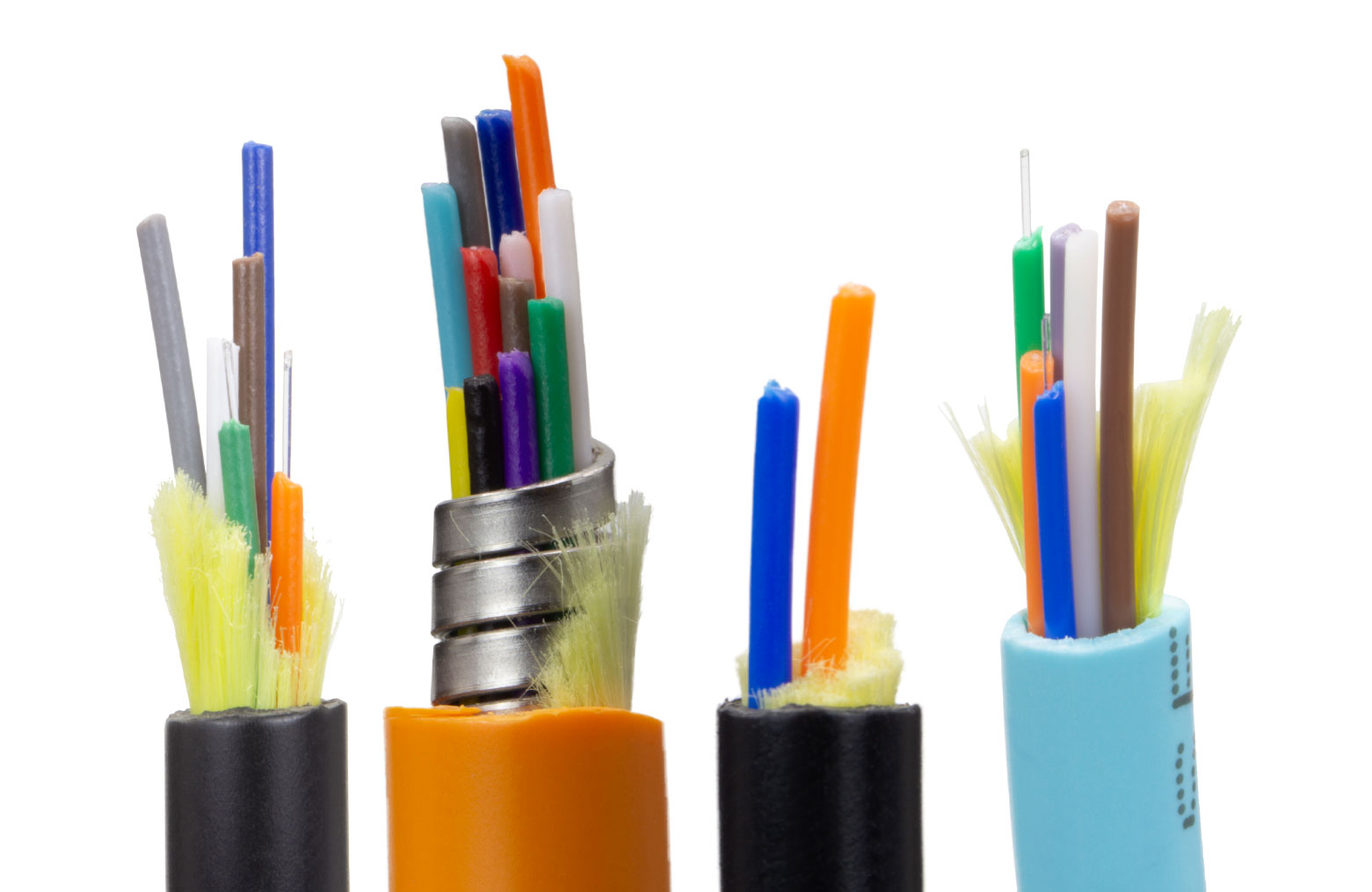The Evolution of Fiber Optics
As technology continues to change and evolve the landscape of the world we live in, few advancements have impacted our everyday lives as much as Fiber Optic technologies. Throughout the last fifty years, we have witnessed the tremendous growth of the global telecommunications industry, allowing for future generations to experience unparalleled connectivity that prior generations couldn’t have imagined. The greatest contributing factor to the rapid evolution of this technology is our explosive world population growth from 3.8 billion to more than 8 billion people. In the US alone, the population increased from 207.3 million to over 339 million! How has the deployment of fiber optics made our digital lives faster, more reliable, and more interconnected than ever before? Let’s take a journey through the world of fiber optics to unveil its inception, evolution, and the crucial role it has played in reshaping the digital landscape.

Since the mid-20th century, the world has experienced monumental shifts in the way we interact with technology. During this era, the conception of fiber optics took place and would eventually lead to reshaping the way we, as humans, communicate with each other. In the 1950s, Harold Hopkins, and Narinder Singh Kapany created the first glass fibers that could transmit light signals. However, the technology didn’t gain full traction until the 1960s when fiber optics began attracting major attention from telecommunications companies, both in the United States and across the world. This technology was refined and enhanced, created from an unprecedented material – glass, or more precisely, pure silica material.
 The manufacturing process begins with a glass tube placed on a lathe machine. The tube is rotated while a carefully controlled high temperature gas
torch collapses the tube, resulting in a solid glass rod. This rod then moves to a wire draw tower where it is precisely drawn and stretched through
dies, sculpting it into the preferred size. From there, plastic or PVC coatings are added to the fine strands, resulting in the cable at the heart of
our digital world today. From here the core is moved to the sheathing line where it gets bound together and pulled through an extruder. Finally, a
Kevlar jacket is applied to the cable, pulled down the sheathing line, cooled, and coiled onto a cable reel.
The manufacturing process begins with a glass tube placed on a lathe machine. The tube is rotated while a carefully controlled high temperature gas
torch collapses the tube, resulting in a solid glass rod. This rod then moves to a wire draw tower where it is precisely drawn and stretched through
dies, sculpting it into the preferred size. From there, plastic or PVC coatings are added to the fine strands, resulting in the cable at the heart of
our digital world today. From here the core is moved to the sheathing line where it gets bound together and pulled through an extruder. Finally, a
Kevlar jacket is applied to the cable, pulled down the sheathing line, cooled, and coiled onto a cable reel.
 The development of fusion splicing technology – where a precision machine aligns the ends of two strands of fiber core and melts one strand to another,
allows for the creation of much longer fiber optic cables to suit most network installations. Cables can then be placed in splice trays, closures,
cabinets, and pedestals. Finally, each end of the cable must be terminated with connectors. The connectors can be plugged in to various devices to
process the optical signal.
The development of fusion splicing technology – where a precision machine aligns the ends of two strands of fiber core and melts one strand to another,
allows for the creation of much longer fiber optic cables to suit most network installations. Cables can then be placed in splice trays, closures,
cabinets, and pedestals. Finally, each end of the cable must be terminated with connectors. The connectors can be plugged in to various devices to
process the optical signal.
 As we progress through the history of fiber optics, we see that during the early 1970s multi-mode fiber was very influential, with variants of 62.5 microns
and 50 microns. The inception of single-mode fiber with an 8.3-micron diameter core marked a pivotal turning point around 1981. While concepts like OM
(“optical multimode”) and OS (“optical singlemode”) codes for differentiating fiber performance levels didn’t exist, the industry saw the introduction of
connectors and splices. The first fiber optic connector was the Biconic connector followed by the ST connector, then the SC connector, and later the LC
connector. The Biconic connector was used in every telecom office and data center where fiber quickly became the media of choice. Few people at this time
realized how fast fiber optics technologies would evolve and how quickly the speed at which this enormous amount of data would travel around the world.
Soon the Biconic connector could not handle such a large capacity of data. The solution that was developed included re-routing thousands of jumpers (patch
cords) and replacing the Biconic connectors with SC or ST connectors. Needless to say, this was a huge undertaking; very expensive, and very time consuming.
Later, many offices migrated to the LC connector (Lucent connector), which was a much smaller connector that allowed customers to make room for more connections
in a smaller space. These connectors paved the way for later innovations, such as ribbon fiber and multi-fiber connectors that amplified the potential of the
technology. Fiber optics has allowed us to put more strands into one cable, requiring much less space than copper cables. Although it is astonishing to see
people accomplish all of this, there will always be a bigger and better technology around the corner, it is just a matter of time!
As we progress through the history of fiber optics, we see that during the early 1970s multi-mode fiber was very influential, with variants of 62.5 microns
and 50 microns. The inception of single-mode fiber with an 8.3-micron diameter core marked a pivotal turning point around 1981. While concepts like OM
(“optical multimode”) and OS (“optical singlemode”) codes for differentiating fiber performance levels didn’t exist, the industry saw the introduction of
connectors and splices. The first fiber optic connector was the Biconic connector followed by the ST connector, then the SC connector, and later the LC
connector. The Biconic connector was used in every telecom office and data center where fiber quickly became the media of choice. Few people at this time
realized how fast fiber optics technologies would evolve and how quickly the speed at which this enormous amount of data would travel around the world.
Soon the Biconic connector could not handle such a large capacity of data. The solution that was developed included re-routing thousands of jumpers (patch
cords) and replacing the Biconic connectors with SC or ST connectors. Needless to say, this was a huge undertaking; very expensive, and very time consuming.
Later, many offices migrated to the LC connector (Lucent connector), which was a much smaller connector that allowed customers to make room for more connections
in a smaller space. These connectors paved the way for later innovations, such as ribbon fiber and multi-fiber connectors that amplified the potential of the
technology. Fiber optics has allowed us to put more strands into one cable, requiring much less space than copper cables. Although it is astonishing to see
people accomplish all of this, there will always be a bigger and better technology around the corner, it is just a matter of time!
 These days, people are staying connected using all kinds of devices. Fiber Optics is growing to meet this demand by providing the high bandwidth, low latency
performance required by modern technologies like IoT (Internet of Things). With modern applications like gaming and streaming, the demand for reliable
high-speed connectivity with low latency is greater than ever. Fiber optics have revolutionized modern medicine, enabling significant advancements in life
saving technologies such as minimally invasive surgeries, remote patient monitoring, tele-health, imaging and diagnostics. These innovations were essential in
our global response to the 2020 pandemic, and will continue to play a major role in the future of health care. Moreover, fiber optics with their capacity to
support enormous amounts of data and speed, will be crucial for the development of quantum computing and high speed communication.
These days, people are staying connected using all kinds of devices. Fiber Optics is growing to meet this demand by providing the high bandwidth, low latency
performance required by modern technologies like IoT (Internet of Things). With modern applications like gaming and streaming, the demand for reliable
high-speed connectivity with low latency is greater than ever. Fiber optics have revolutionized modern medicine, enabling significant advancements in life
saving technologies such as minimally invasive surgeries, remote patient monitoring, tele-health, imaging and diagnostics. These innovations were essential in
our global response to the 2020 pandemic, and will continue to play a major role in the future of health care. Moreover, fiber optics with their capacity to
support enormous amounts of data and speed, will be crucial for the development of quantum computing and high speed communication.
 In Today’s world, it’s tough to overlook the unprecedented impact that fiber optics has had on everyday life; we wouldn’t be able to experience the Internet and
all of its possibilities without fiber optics! A single fiber optic cable with an abundance of strands can carry large amounts of data across amazing distances,
distances that surpass the limitations of traditional copper cables. These miraculous threads move information around the world through various environments –
from high in the sky on telephone poles, to buried deep underground, and even submerged underwater! Some fiber optic cable even comes with an armored layer under
the jacket to help protect it from rats and gophers chewing into and destroying the cable.
In Today’s world, it’s tough to overlook the unprecedented impact that fiber optics has had on everyday life; we wouldn’t be able to experience the Internet and
all of its possibilities without fiber optics! A single fiber optic cable with an abundance of strands can carry large amounts of data across amazing distances,
distances that surpass the limitations of traditional copper cables. These miraculous threads move information around the world through various environments –
from high in the sky on telephone poles, to buried deep underground, and even submerged underwater! Some fiber optic cable even comes with an armored layer under
the jacket to help protect it from rats and gophers chewing into and destroying the cable.
In conclusion, fiber optic technologies have become deeply ingrained in almost every aspect of modern life. From enabling high-speed Internet to advancing medical capabilities, fiber optics has fundamentally transformed how we communicate, work, learn, and care for one another. As the world population continues to grow and new innovations emerge that require fast, reliable connectivity, fiber optics will remain at the core of human progress. It is truly astonishing to reflect on how far fiber optic capabilities have advanced in just half a century. One can only imagine what the next 50 years of innovation might bring as these miraculous threads of glass continue reshaping our digital landscape.
SOURCES:
- https://www.worldometers.info/world-population/world-population-by-year
- https://www.worldometers.info/world-population/us-population
- https://en.wikipedia.org/wiki/Fiber-optic_communication



